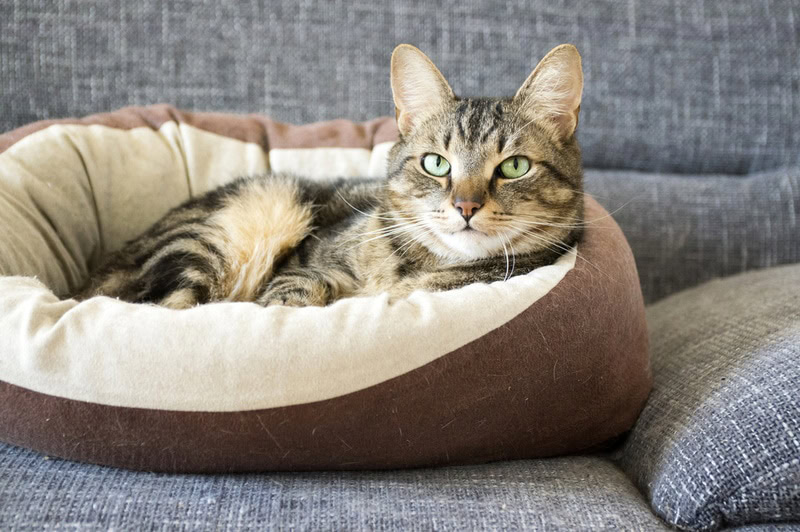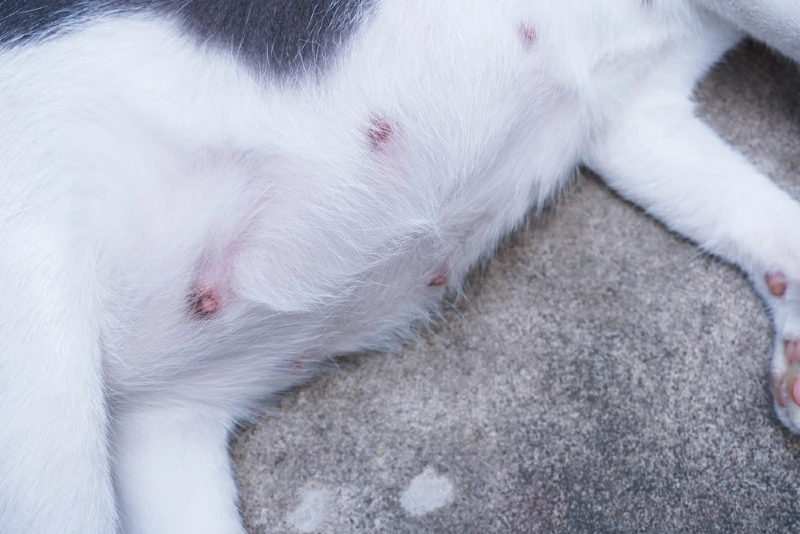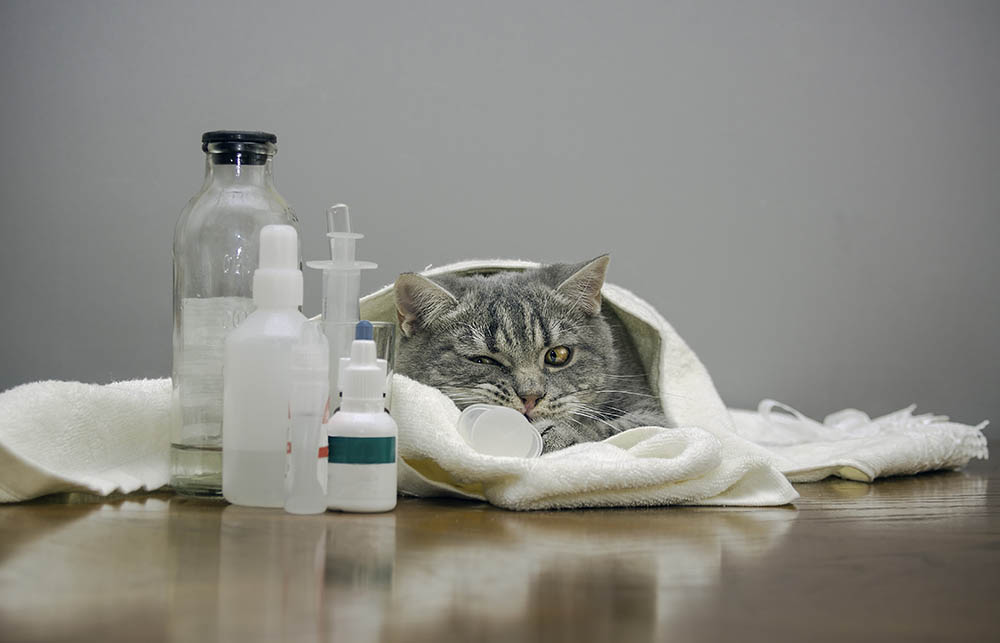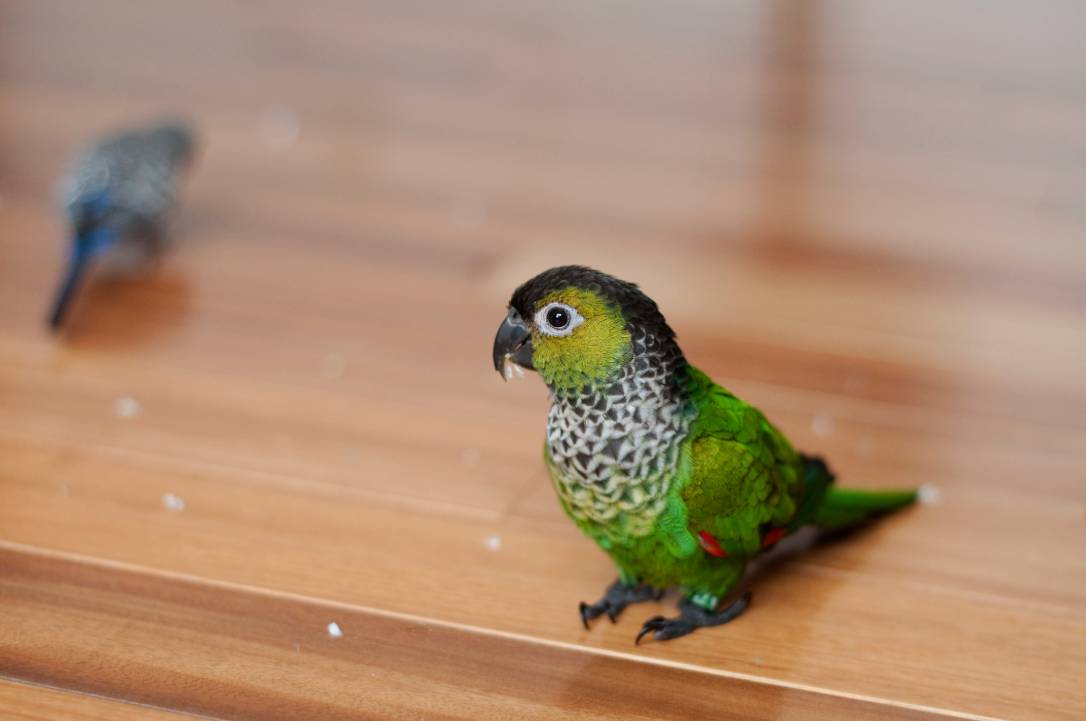VET APPROVED

The information is current and up-to-date in accordance with the latest veterinarian research.
Learn more »Click to Skip Ahead
Stink. Stank. Stunk. These words pertain to the Grinch’s Christmas song, but they perfectly capture your pet’s bed.
Even a cat bed needs a good scrubbing at least once per month. If you’ve never washed a cat bed, we’re here to help.
In this post, we’re breaking down everything about keeping your cat’s bed pristine. Machine washing, hand washing, drying, soap type—you name it. Let’s get started.

How Often Should You Wash a Cat Bed?
The nice thing about cats is their hygienic habits. Cats regularly bathe their entire bodies, so they don’t track as much dirt and grime around the house as dogs. However, they still shed fur, dead skin, and oils as we do, so you’ll have to wash the cat bed eventually.
A good rule of thumb is to wash your cat’s bedding at least once per month. Toss it in the washing machine (assuming you can) when the first of the month rolls around, and the bed is good to go for another 30 days or so.
Sometimes more frequent washes are warranted, like if you have more than one cat or a cat that frequently gets sick. Just use your best judgment.
If you want the bed to stay fresher, sprinkle some baking soda on it, let it sit for 10 minutes, then vacuum it up or lint roll the extra fur and debris. Voila! The bed is clean and free from hair and stench.
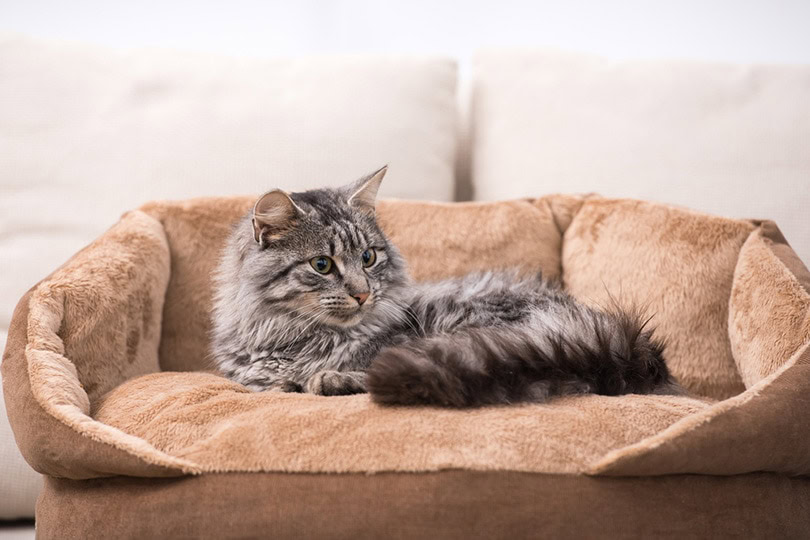
Tools of the Trade
When the time comes to wash your cat’s bed, ensure you have the tools of the trade ready to go. Here’s what you need:
- Rubber or disposable gloves
- Pet-safe laundry detergent or Castile Soap
- Baking soda (optional)
- Enzyme cleaner (optional)
A splash of detergent into the washing machine will usually do the job. Other times, detergent isn’t enough. That’s why having baking soda on hand is wise. It’s an excellent deodorizer that simultaneously boosts the power of the detergent. It’s like giving your soap an energy drink.
Whatever soap you use, ensure it’s a pet-safe option that isn’t heavily scented. Our favorite brands are Seventh Generation and Dr. Bronner’s Castile Soap. You can find them at most grocery stores.

The Dos and Don’ts of Washing Your Cat’s Bed
Washing a cat bed isn’t rocket science, but there are guidelines for cleaning anything that yields a better product.
When cleaning your cat’s bed, do not:
- Use a heavily scented detergent
- Use an ammonia-based product
These products either enhance the smell of cat urine or offend your cat’s nostrils and make them avoid using the bed.
When cleaning your cat’s bed, do:
- Use a stain remover and deodorizer
- Check that it’s machine washable
- Check the washing directions on the label
- Remove debris and extra fur before throwing the bed in the washing machine
Most people throw their clothes in the washing machine without checking the labels, so why would they check the labels on the cat bed?
Simply put, your cat’s bed (and your clothes) will last longer when you follow the directions on the tag. It’s a small change that leads to a significant impact.
In addition, removing the excess fur, urine, and waste keeps your washing machine clean and makes cleaning the cat bed a cinch.
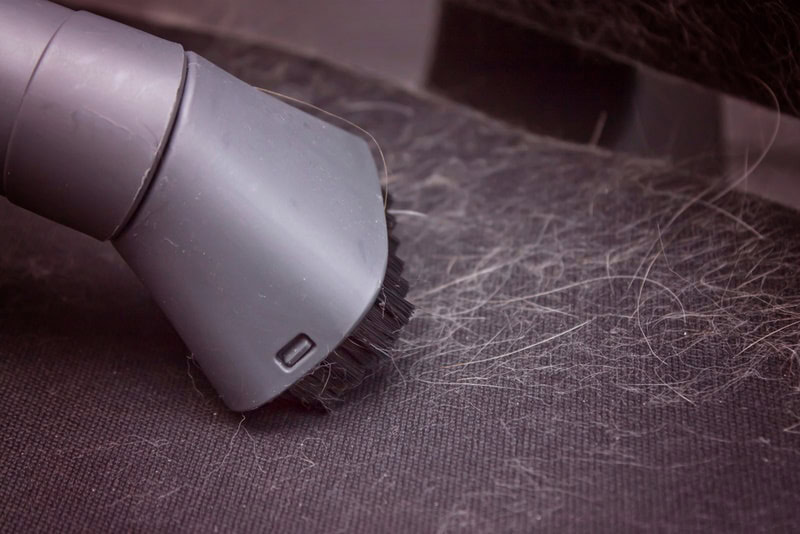

How to Wash Your Cat’s Bed: Machine Washing
Let’s dive into the steps of machine washing your cat’s bedding. It’s pretty simple.
1. Prep the Bedding
Lint roll extra fur, dab excess urine, and scrub crusted goop and feces off of the bed.
2. Spot Treat
Separate the cat bed cover from the mattress. Spritz some stain remover on the desired areas and leave it for 10 minutes or whatever the directions say. Toss the bed into the wash and add about 1 tablespoon of baking soda. An enzyme cleaner is also a great, natural alternative that works for spot treatment.
If you're trying to find an enzyme cleaner that does it all, we highly recommend our favorite cleaner, the Hepper Advanced Bio-Enzyme Pet Stain & Odor Eliminator Spray.
| Rating | Image | Product | Details | |
|---|---|---|---|---|
 |
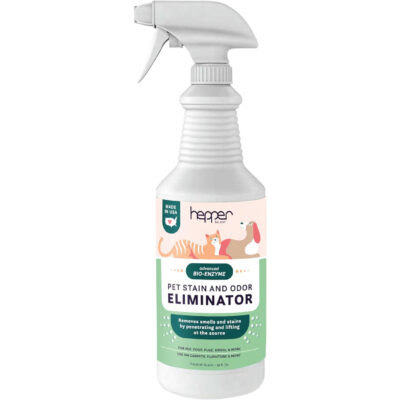 |
Hepper Advanced Bio-Enzyme Pet Stain & Odor Eliminator Spray |
|
CHECK PRICE |
It permanently removes the very worst stains and smells you can imagine and makes clean up a breeze. There's even a 100% satisfaction guarantee! Click here to order a bottle today.
At PangoVet, we’ve admired Hepper for many years, and decided to take a controlling ownership interest so that we could benefit from the outstanding products of this cool cat company!
3. Wash and Dry
Start the washing machine and add detergent. Check the fabric label for the correct water temperature so you don’t ruin the bed. You can put the bed in the dryer if the label says it’s safe. Otherwise, hang dry it.


How to Wash Your Cat’s Bed: Hand Washing
Hand washing is similar but with a bit more elbow grease involved.
1. Fill a Large Container or Sink With Water and Soap
This step is the same as starting the washing machine and adding detergent and boosters, like baking soda. Check the fabric label for the correct water temperature.
2. Spot Treat
Separate the cat bed cover from the mattress. Lint roll any extra fur, dab excess urine, and scrub crusted goop and feces off of the bed. Spray solution on the areas and wait a half hour before tossing it into the wash or exposing the areas to water.
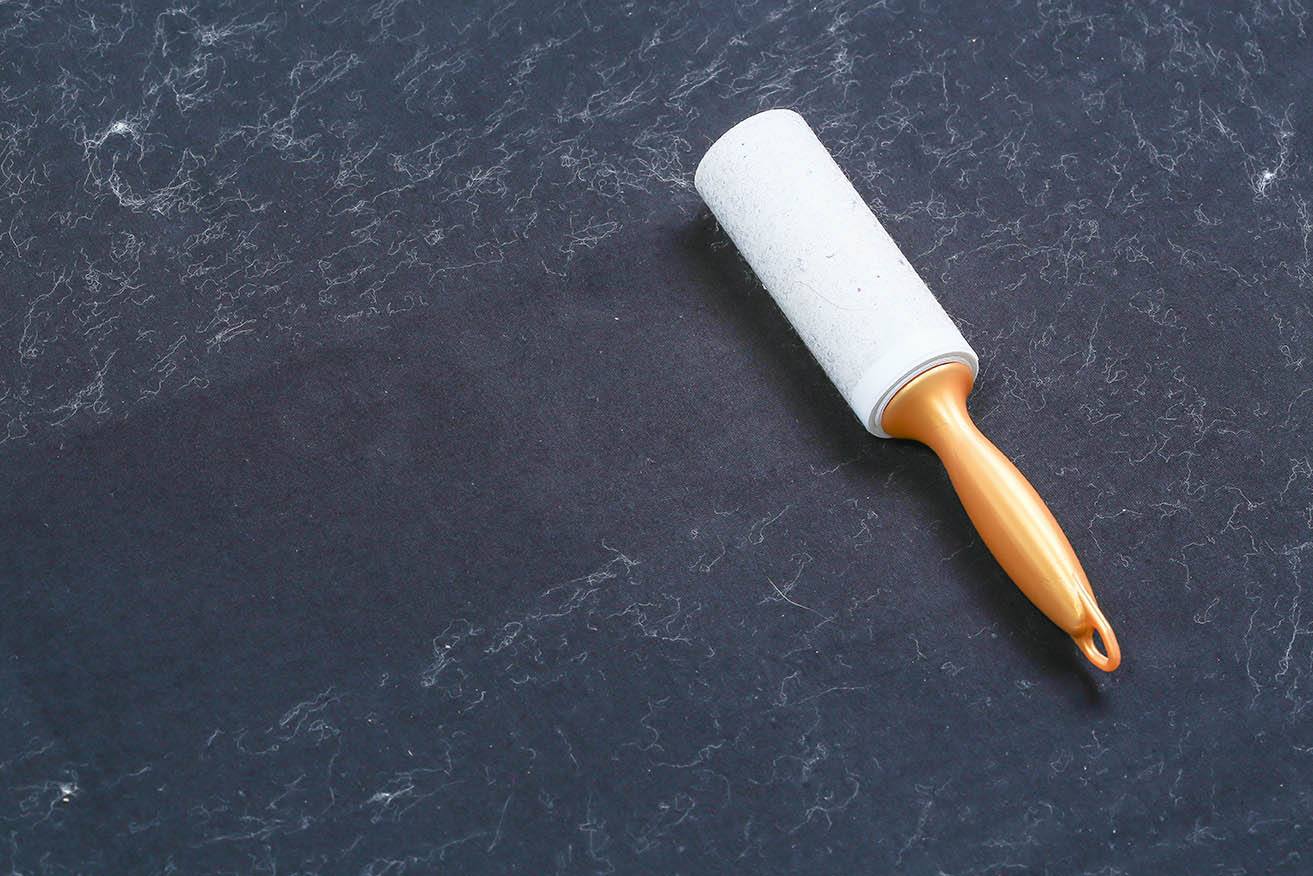
3. Wash
Using gloves, agitate the water with your hands and knead the bed in the water. Scrub any stained areas and rinse in clean water when done. Wring and dry.

FAQ
How Long Does It Take for Cat Urine to Fade?
Cat urine that’s been sitting in a material is tough to remove. It can take several washes until the smell fades. Using a pet enzymatic cleaner will greatly help with this.
What if I Don’t Have a Stain Remover?
If you don’t have a specific pet stain remover on hand, don’t worry. You can use other options:
- Dilute Laundry Bleach
- A mixture of vinegar and baking soda
- A mixture of Dawn dish soap and hydrogen peroxide
Make sure to thoroughly wash out these stain removal products once they have performed their task.
Why Can’t I Machine Dry My Cat’s Bed?
Machine washing causes materials to lose their luster faster because of dryer heat and friction. Air drying certainly takes more time, but it’s gentler on fabrics, causing the material to last longer.
I Washed My Cat’s Bed and It’s Still Dirty. What Now?
You’ll need to re-wash the bed if this is the case. Ensure you use stain remover and deodorizer. If the bed still isn’t clean after several washes, retire the bed and find something new for your kitty.
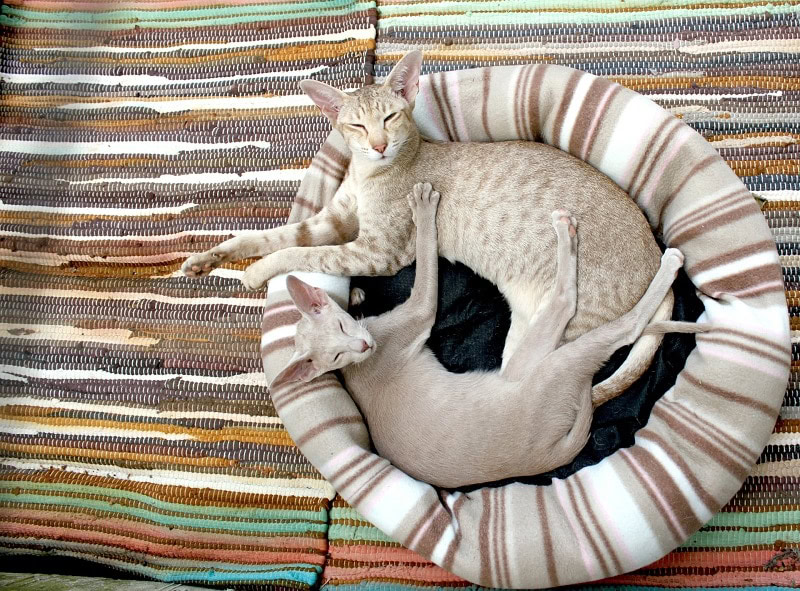
Will Washing My Cat’s Bed Remove Fleas?
Washing your cat’s bed will help, but the fleas will return if you don’t treat your cat, so get your cat on a flea preventative. In the meantime, lay your cat’s bed out in the sunshine. The light and heat will ward off fleas.
I Washed My Cat’s Bed and Now They Won’t Use It, What Now?
Some cats are more sensitive to disruption and scents than others. If your cat seems reluctant to use the bed try rubbing some of their scent on it. Take a clean towel, rub your cat gently with it, and then transfer the scent to the bed. Alternatively, try spritzing the bed with a facial pheromone spray.
Related Reads:

Conclusion
Do you know what’s nice about this guide? It will be the same next year, and the next year, and the year after that one. The rules of fabric washing will never change. That is, of course, unless there is a breakthrough in the cleaning world!
Follow the rules of fabrics and your cat’s bed will be good to go. Remember, to keep it hygienic. If it doesn’t come clean after a few tries, toss it and find a new one.
Featured Image Credit: Iva Vagnerova, Shutterstock
